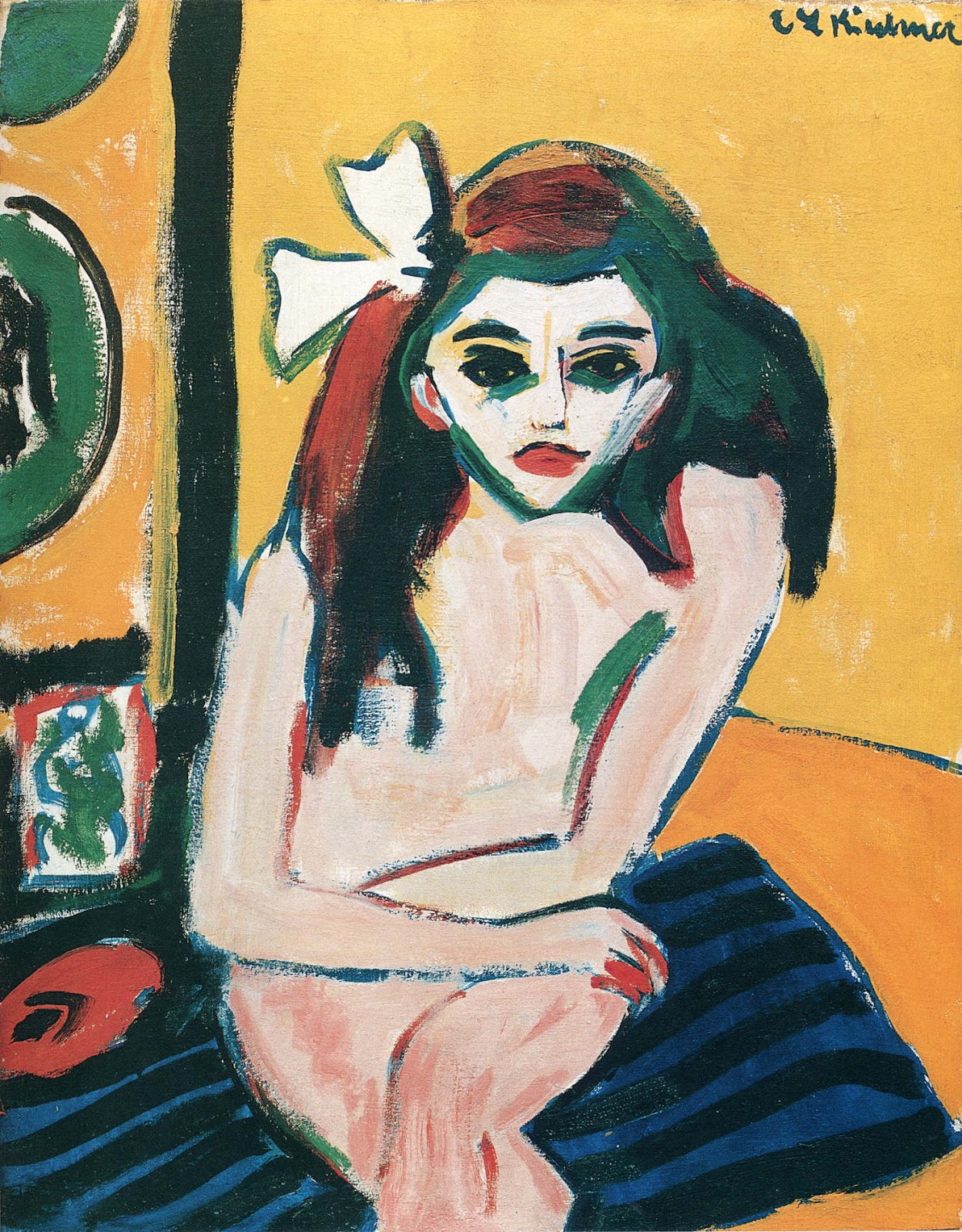Expressionism emerged simultaneously in various cities across Germany as a response to a widespread anxiety about humanity's increasingly discordant relationship with the world and accompanying lost feelings of authenticity and spirituality. In part a reaction against Impressionism and academic art, Expressionism was inspired most heavily by the Symbolist currents in late nineteenth-century art. Vincent van Gogh, Edvard Munch, and James Ensor proved particularly influential to the Expressionists, encouraging the distortion of form and the deployment of strong colors to convey a variety of anxieties and yearnings.
The artist attempts to depict not objective reality but rather the subjective emotions and responses that objects and events arouse in him. He accomplishes his aim through distortion, exaggeration, primitivism, and fantasy and through the vivid, jarring, violent, or dynamic application of formal elements.
The Expressionist is looking for a return to our inner, primitive state, in which we feel subordinate to life as a whole and in which we feel the often, ominous powers at work within ourselves, just as we see this in nature around us.
One of the most well known German expressinists is Ernst Ludwig Kirchner. On this occasion, Students from SIES Humanes in Cubas have made various interpretations of his most important paintings by using the collage technique.
In the pictures below you can see some of the amazing works by our students.


































No comments:
Post a Comment
Gracias por tu comentario.